The Ciudad Perdida hike
Last December I made an unforgettable trip through Colombia together with my partner Paul. We visited Bogotá, the Amazon, the coffee region, Medellín and Santa Marta. One of our highlights was the multi-day trekking to the 'Ciudad Perdida', the lost city. In this blog I take you on this adventure.
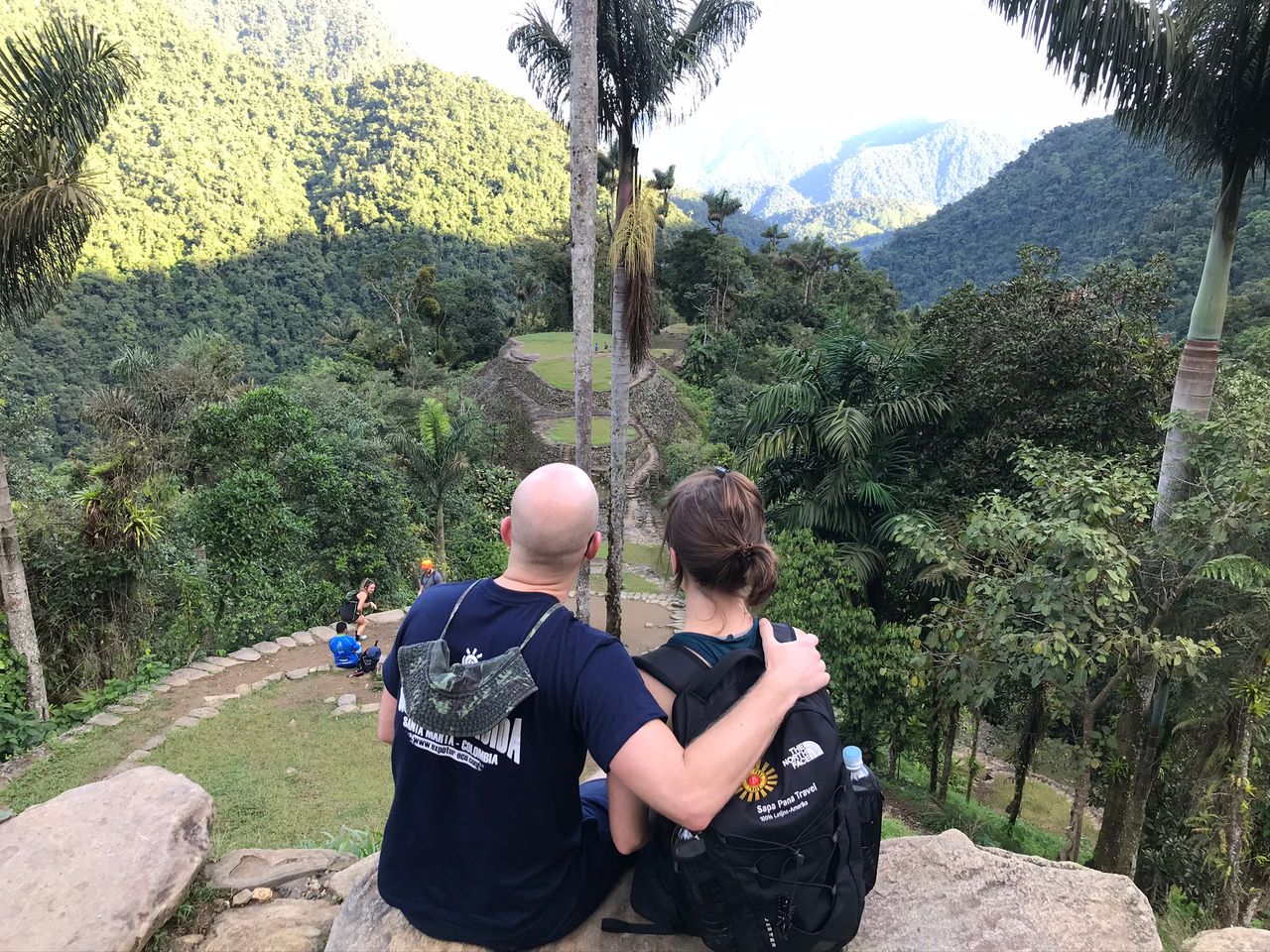
What is the Ciudad Perdida hike?
The Ciudad Perdida hike is a multi-day trekking through the Colombian jungle, in the Sierra Nevada de Santa Marta. This is located in the north of the country on the Caribbean coast. The final destination of the Ciudad Perdida hike is the hidden indigenous city of Teyuna, also called the lost city. Special is that you can only visit this hidden city by means of a multi-day hike.
The standard variant of the trekking is four days, but it is possible to make the hike shorter or longer. However, the route you take remains exactly the same. During these days you will be far from the modern world, there is limited electricity, not always hot water and the sleeping possibilities are simple. On the other hand, you will be surrounded by a great nature, you will get acquainted with indigenous Kogui communities and a true adventure.
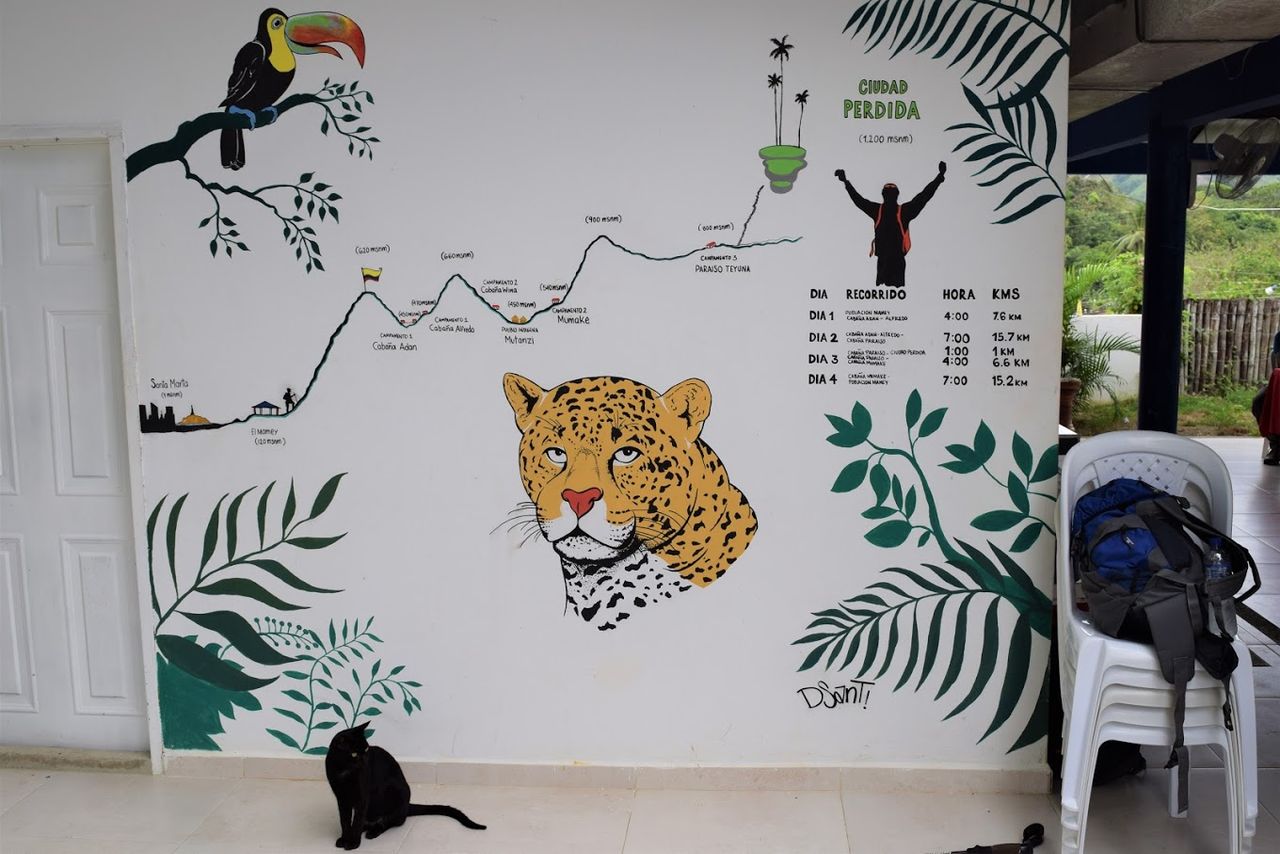
What is the best time to travel to the Ciudad Perdida hike?
You can walk the Ciudad Perdida hike all year round, but the best time to walk the hike in the dry season is from December to March. Because there is less rain the Buritara river is less high and it is easier to cross the river. The route is also less muddy.
During the day the temperature is around 30 degrees throughout the year. In the evenings it is pleasantly cooler. Every year around September the route of the Ciudad Perdida trekking is closed for about a month, so that the area can recover.
For whom is the Ciudad Perdida hike suitable?
The trekking is made by people of all ages. Even inexperienced hikers can do the trekking. As long as you have a good basic stamina and have a good mobility you can participate in this trekking.
It is important that you ask yourself in advance whether such a hike is suitable for you. It is a multi-day hike in which you walk for at least 4-5 hours every day with many ascents and descents. You are in the jungle with a warm and humid climate. It can be muddy and because you are in the rainforest, it can also rain and there are insects. The nights are simple in sleeping rooms and bunk beds, there is little electricity and you have little access to hot water. In short, it is a beautiful walk for travellers who like adventure and do not mind spending a few days in somewhat simpler conditions.
Teyuna, the lost city
The city of Teyuna was founded around 800 A.D. and was only rediscovered by local treasure hunters in 1972. They found golden statues and ceramic urns here, which they then sold on the black market. Archaeologists then, together with the Colombian Anthropological Institute, seized the site and rebuilt it. The various indigenous communities still living in the area of the archaeological site today indicate that they visited the site regularly before it was discovered on a large scale. They call the town Teyuna and they believe it was the heart of a network of villages inhabited by their ancestors, the Tayrona.

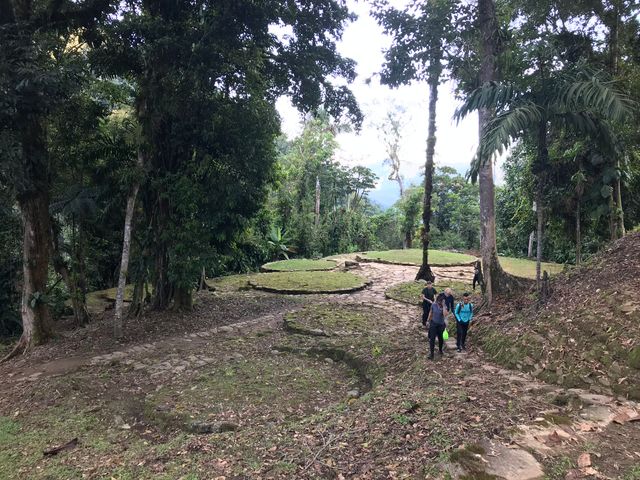
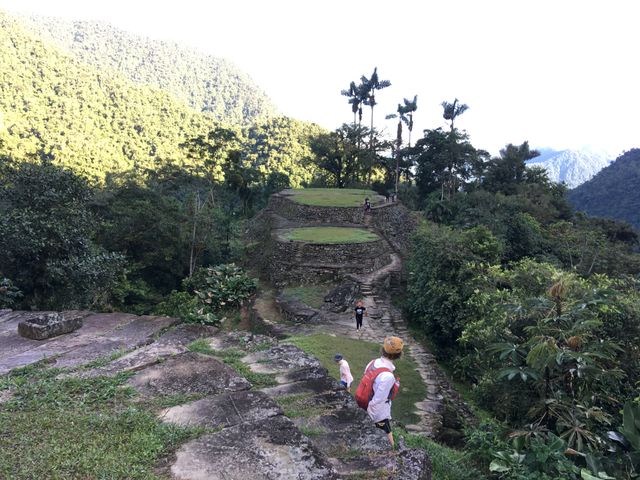
Day 1
The multi-day hike to the Ciudad Perdida is about to start. In the morning we depart from Santa Marta to the village of El Mamey. We only have a small backpack with everything we need for the next few days: towel, dry clothes, toiletries, bottles of water, sunscreen and, very important, anti-insect spray. After about an hour the driver steers the car off the paved road and drives over a winding dirt road up the mountain. Once in a while we cross a small river. We arrive at El Mamey and meet a group that just returned from the trekking. At first sight they don't look completely exhausted yet, so we have high hopes that we look the same at the end of the trip.
After a Colombian lunch it's time to start the trekking, backpacks on and we go. We start at an altitude of 120 metres above sea level and today we ascend to an altitude of 620 metres before descending 200 metres. It is a tough hike. The midday sun is burning and soon the drops of sweat are on our heads. The route is beautiful and we sometimes stop at several viewpoints. After about two hours of walking we take a break and get a piece of fruit. Nice and refreshing. Our guide tells us that the next hour we will walk over the so called 'Colombian flat'. This means that the route is hilly but that you ascend as much as you descend.
The path gets narrower and soon we cross the Buritaca river for the first time, via suspension bridges. Along the way we meet some soldiers with heavy luggage. They do exercises here and make sure the area is protected. We will meet these soldiers more often in the coming days.
After half a day of walking we arrive at our sleeping place for this evening. Dinner has already arrived. This is taken by pack mules from one place to another. After dinner we discuss the route for the next day with our guide and get a small introduction about the indigenous communities that live in the area. We go to bed on time. I enjoyed the first day. It was warm, but good. We have seen many beautiful views.
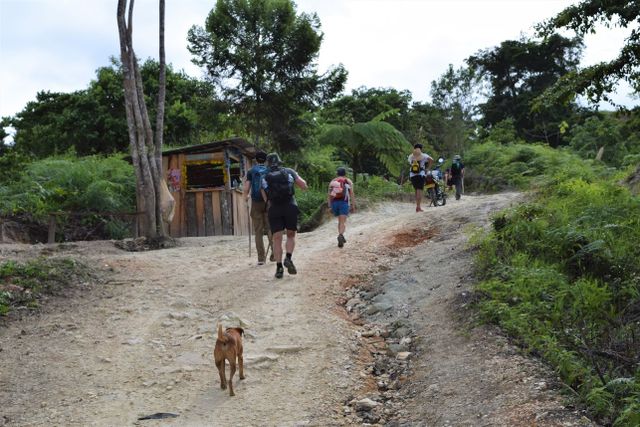
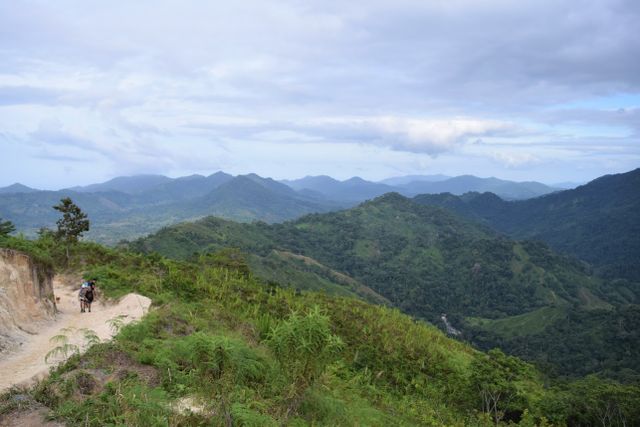
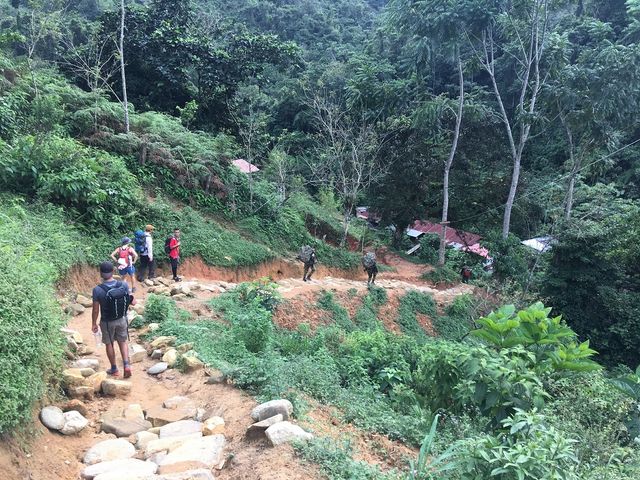

Day 2
This morning we start early so we can still enjoy the fresh morning air. At the first rays of sunshine we leave our sleeping place. Backpack on and there we go again. Today we will walk the most kilometres. We walk past small local farmers and enjoy the green hills around us. They are covered with large trees alterrnated with tropical palm trees. Despite the fact that it is still relatively cool, it is very humid and we soon feel the first drops of sweat on our bodies.

We walk along the mountains and pass the Buritaca river several times. We stop for a break and get another piece of fruit, which is very welcome. We meet a Kogi Indian who lives in this area. He tells us about the way the Indians live here. The Kogui believe in the 'Aluna' or mother nature. They wear white clothing that represents mother nature and the purity of nature. They see the earth as a living being and see mankind as children of the earth. They believe that we have to help extend and protect life on earth. Actions of destruction, exploitation and misappropriation of resources weaken Mother Nature and will lead to the destruction of mankind. The Kogui's try to keep the world in balance by living in harmony with the environment. I find it very special to see that there are still communities that live this way and maintain the traditions of their ancestors.
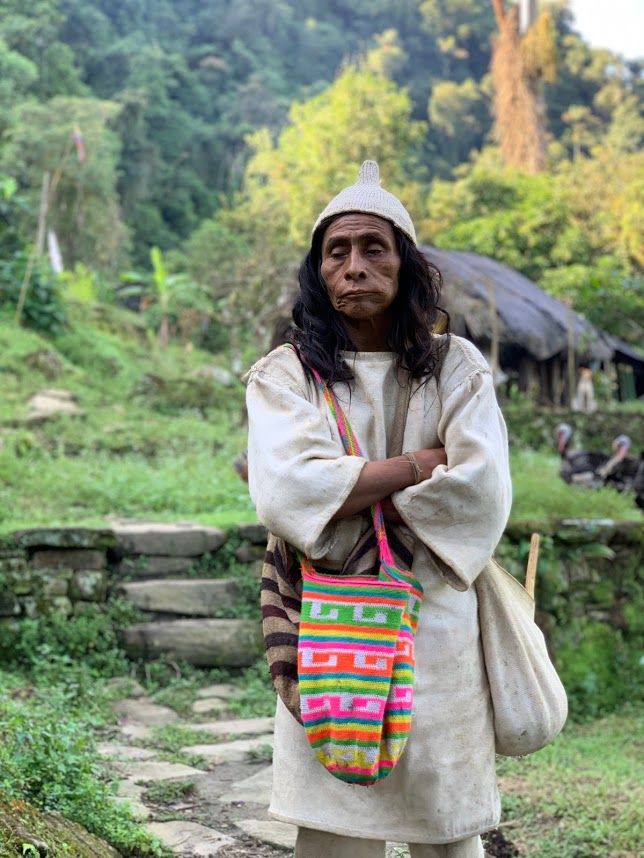
Before we follow or path, the Kogi Indian shows how he makes his Poporo. A Poporo is an important instrument for the Indians. It is a dried gourd and looks like a rattle at first sight. The hollowed out gourd contains a powder of seashells. Through a hole at the top you can use a stick to get the powder out of the gourd. Meanwhile the Kogi Indian chews coca leaves. By mixing the chalk with its own saliva, a kind of glue is created. He spreads this glue on the outside of the gourd, creating a thick rim of chalk over time. This edge of chalk is the way the Indians communicate with their ancestors. Thoughts and messages are stored here. Here you can see in a video how the Poporo is used.
We walk further to our lunch spot where we cool down in the Buritaca river. The water is freezing cold, but a very welcome refreshment as temperatures are very high around noon. After the refreshing dive and a nutritious lunch we continue. The first part is Colombian flat and after that we get our 'happy hour'. This is a long and steep climb of about 500 meters altitude, at the hottest part of the day, in the burning sun. Once we get to the top we are rewarded, because the view is beautiful. We walk further along several communities, living in traditional huts. At the end of the afternoon we arrive at our place to sleep, only one kilometre from the Lost City.




Day 3
Just before sunrise we leave for the Ciudad Perdida. We leave our backpacks behind, because we will be back in the afternoon. We only take our camera and anti-insect spray with us, because according to our guide the city is sometimes called the 'mosquito capital'. It's a half hour walk to the big crossing over the Buritaca river. There are two ropes that we can hold on to while walking across the river to reach the other side. The water comes to my waist and I have to hold on tight in order not to slip.
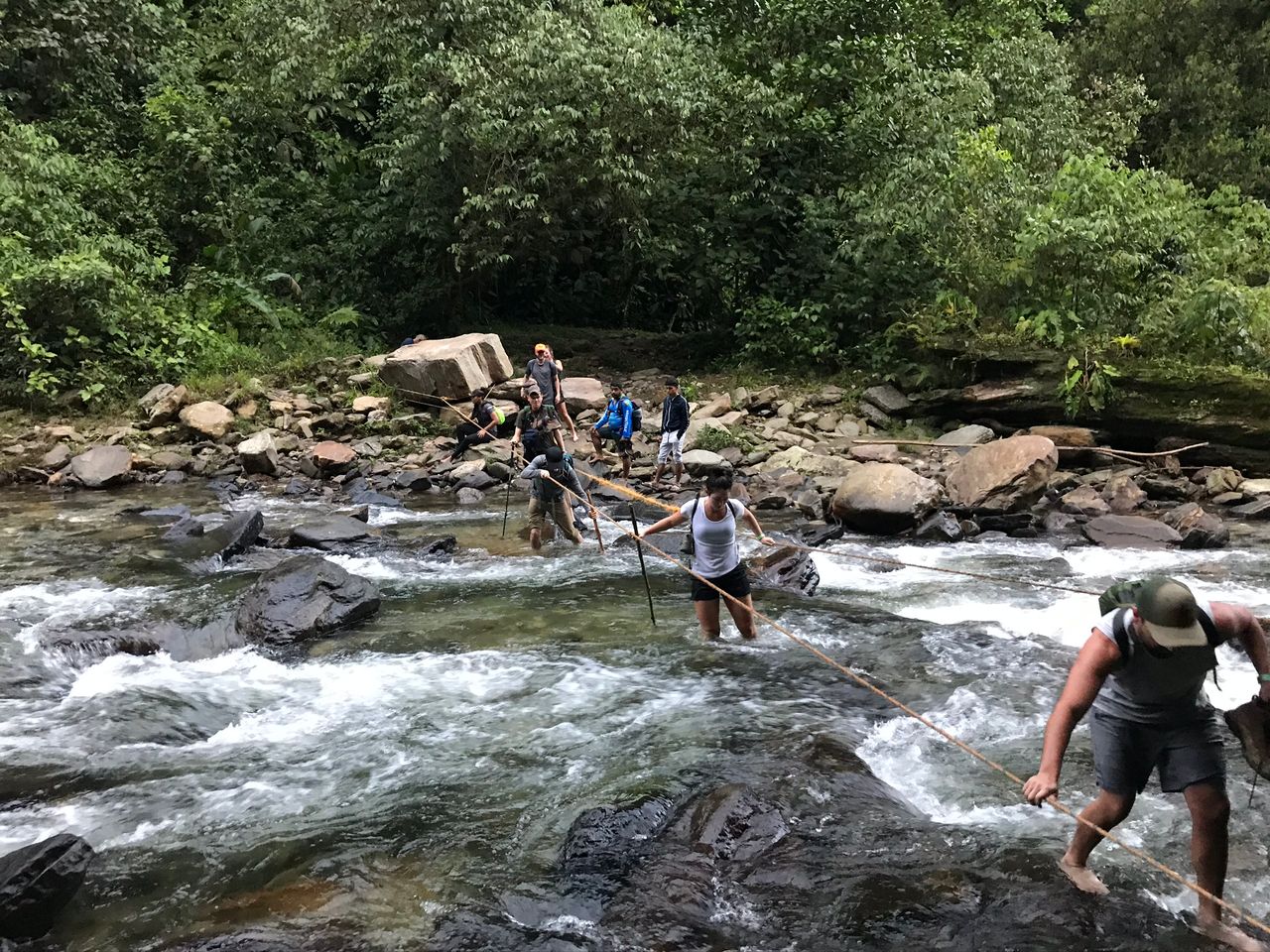
Once on the other side the last obstacle is waiting for us; no less than 1200 stone stair steps. It's quite a climb, but the reward is great. We look out over Teyuna, or Ciudad Perdida. While we're amazed by what we see, the guide tells us more about this archaeological site. We are shown around the city extensively and get enough time to take pictures.
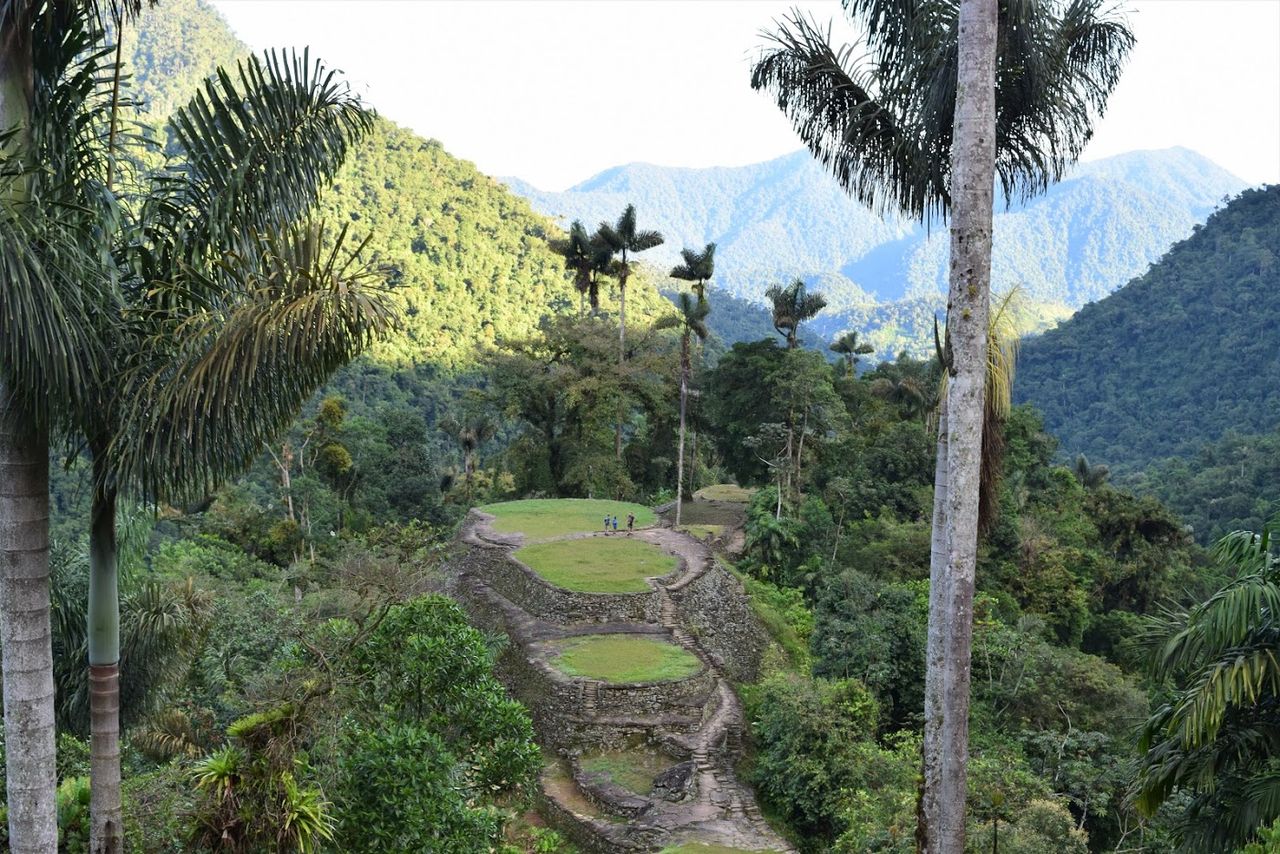


After this it's time to descend the 1200 stairs, cross the Buriaca river and pick up our belongings. After lunch we walk on to the location where we had our lunch break yesterday and where we will spend the night this evening. Yesterday's climb, which our guide jokingly called happy hour, finally feels like a real happy hour, as we walk down without too much trouble. In the afternoon we cool down in the river again. Once you're in it, it feels lovely, refreshing and relaxing. Just after I've climbed out of the river panic occurs. There appears to be a snake swimming in the water. Luckily everyone is out of the water in time and the guides chase the snake away. Of course it remains the jungle where we are.
It's Christmas Eve and the guides provide a glass of bubbles and a small snack to make our last night extra festive. For the lover there is the possibility to sleep in a hammock this night. I'll skip this. Since a few years you can also sleep in bunk beds and after these days this feels a bit more comfortable for me.
Day 4
Unfortunately, the last day of our adventure has arrived. We leave early in the morning towards our starting point of a few days ago. On the way back we enjoy the beautiful views, pass the villages of the Indians who live here once more and slip away now and then through the muddy narrow paths. Because of the sun and the pieces of Colombian flat, it's still a while before we reach the end point. We're tired, happy and certainly satisfied. It wasn't an easy trip. The heat, the long days and the differences in altitude make it tough. But I certainly wouldn't have wanted to miss it. We enjoy a Colombian lunch and get back in the car that brings us back to Santa Marta.
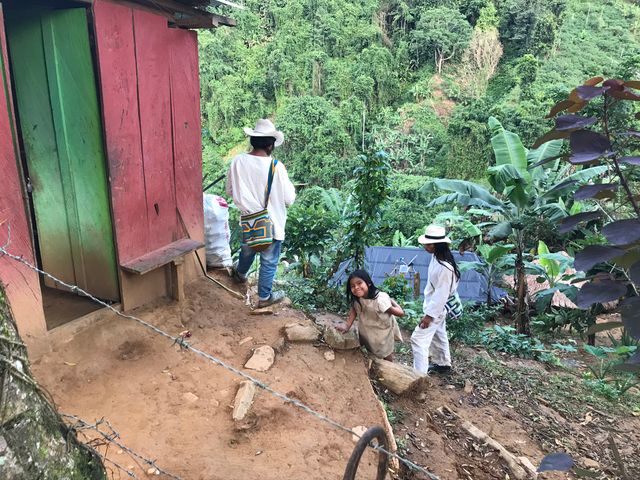

More about a trip through Colombia
Does the Ciudad Perdida hike appeal to you and would you like to make a trip through Colombia? That is possible and we are happy to help you. Do you have questions about a unique journey through Colombia, would you like a tailor made itinerary or would you like to make an appointment at our office? Feel free to contact us. Send an e-mail to info@sapapanatravel.nl or call us on +31 73 610 62 04. We are happy to help.